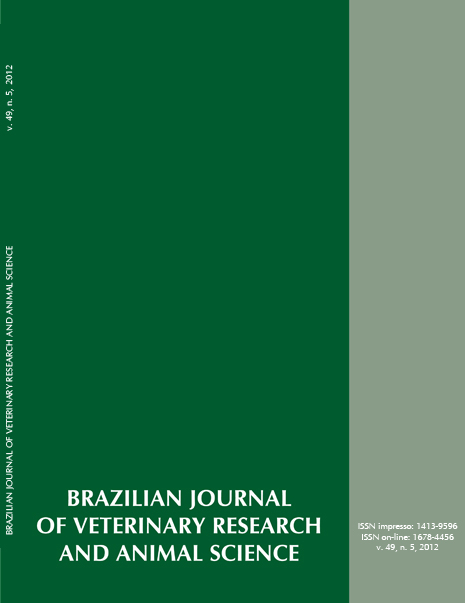Characterization of the immunogenicity of recombinant proteins VirB9, VirB10 and Elongation Factor Tu of Anaplasma marginale in mice
DOI:
https://doi.org/10.11606/issn.2318-3659.v49i5p377-385Keywords:
Anaplasma marginale, Recombinant proteins, Immune response, Vaccine, MiceAbstract
Considering the limitations of current methods of anaplasmosis control, the development of a more effective vaccine is required. Previous studies, using proteomic and genomic approaches, have identified new membrane proteinsin Anaplasma marginale that may be vaccine candidates. These include VirB9, VirB10 and elongation factor-Tu (EFTu).Although the role of these proteins in the membrane of A. marginale has not been properly characterized, production of the recombinant proteins rVirB9, rVirB10, and rEF-Tu has been achieved. However, these recombinant proteins have not yet been exploited in vaccine formulations. The present study describes the use of rVirB9, rVirB10and rEF-Tu, emulsificated in adjuvant Montanide, in mice. A strong humoral immune response was induced under these conditions, with both IgG1 and IgG2a production. The IgG2a/IgG1 ratios revealed a predominance of IgG1.However, splenocytes of the animals that received rVirB9 or rVirB10 produced high levels of gamma interferon after in vitro stimulation, indicating a specific cellular immune response to these proteins. Therefore, further studies are required to adjust the profile of the immune response in order to perform tests of protection against A. marginale in cattle.
Downloads
Downloads
Published
Issue
Section
License
The journal content is authorized under the Creative Commons BY-NC-SA license (summary of the license: https://





